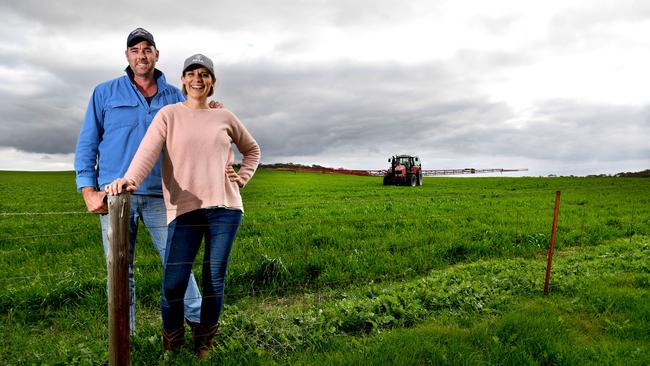University’s machinery team leading world-class research
Drought conditions are increasing in severity so help with maximising profitability is crucial for the farming sector and the University of South Australia is playing a key role.

SA Business
Don't miss out on the headlines from SA Business. Followed categories will be added to My News.
- Changing climate front of mind for farmers
- Prizes, discounts, freebies: Check out the latest subscriber rewards
With productivity and profitability a major challenge for farmers in a changing climate, researchers at the University of South Australia are using cutting edge technology to help maximise crop performance through optimising the use of machinery.
The increasing incidence of drought has led Australia’s farm GDP to decline by 8.3 per cent since the middle of 2018, according to RBA reports.
But researchers at the University of South Australia’s Agricultural Machinery Research and Design Centre (AMRDC) are helping to deliver a much-needed boost to the sector through the use of innovative technology to improve machine performance and help achieve increased grain yield.
Mallee Sustainable Farming program manager Tanja Morgan said the AMRDC offered a valuable service to farmers and farming systems groups, by demonstrating the practicalities of implementing new ways to farm.
“The skill set they provide to the farming sector is really unique,” she said.

The AMRDC is the oldest research centre operating at the University of South Australia, dating back to the 1980s. It is also one of only two dedicated agricultural engineering centres in the country, with the other operating through the University of Southern Queensland.
Key to the work of AMRDC researchers Dr Jack Desbiolles, Dr Chris Saunders, Dr Mustafa Ucgul and Dr James Barr is the use of a computer simulation technique called discrete element method.
Dr Saunders said while discrete element method has been widely used in the mining sector since the 1990s, its use has only recently grown in the primary production space, with the University of South Australia pioneering innovation with applying it to soil engaging machinery.
“Using the discrete element method reveals how a field soil physically responds to different machinery configurations and settings, while computer simulation findings based on careful calibration are also validated in the field using full size machinery,” he said.
“Our focus is on looking at how commercial machines such as ploughs, rippers, spaders and seeders best operate in our very specific soil conditions and how to optimise their use for improved crop performance.
A particular focus for the AMRDC is looking at ways no-till crop seeder machinery can maximise performance in non-wetting sandy soils, which are especially difficult to establish a crop on. Dr Desbiolles said that improvements of up to fourfold in crop establishment and three-fold in grain yield are being demonstrated in field trials.
Dr Barr said the AMRDC’s published research work has attracted the attention of major international machinery manufacturers, with industry connections established in France, India and the Netherlands.
MORE NEWS
Estimated 90pc of KIPT trees damaged after KI fire
Mending fences after once-in-a-lifetime blaze
“The centre also recently initiated collaboration with a research team at Iowa State University in the United States, with the US team also strong in the use of the discrete element method,” he said.
But, Dr Desbiolles believes the technique’s greatest potential may lie much closer to home.
“Much of the machinery in operation in Australia is made overseas and imported, and is often used in very different conditions and sometimes for a different purpose here,” he said.
“The discrete element method can be applied to guide the optimum customisation of these international machines, so they can be more effective and more efficient for local producers.
“This would not only be a significant boost for farmers, it would have the potential to drive new local manufacturing initiatives as well.”
